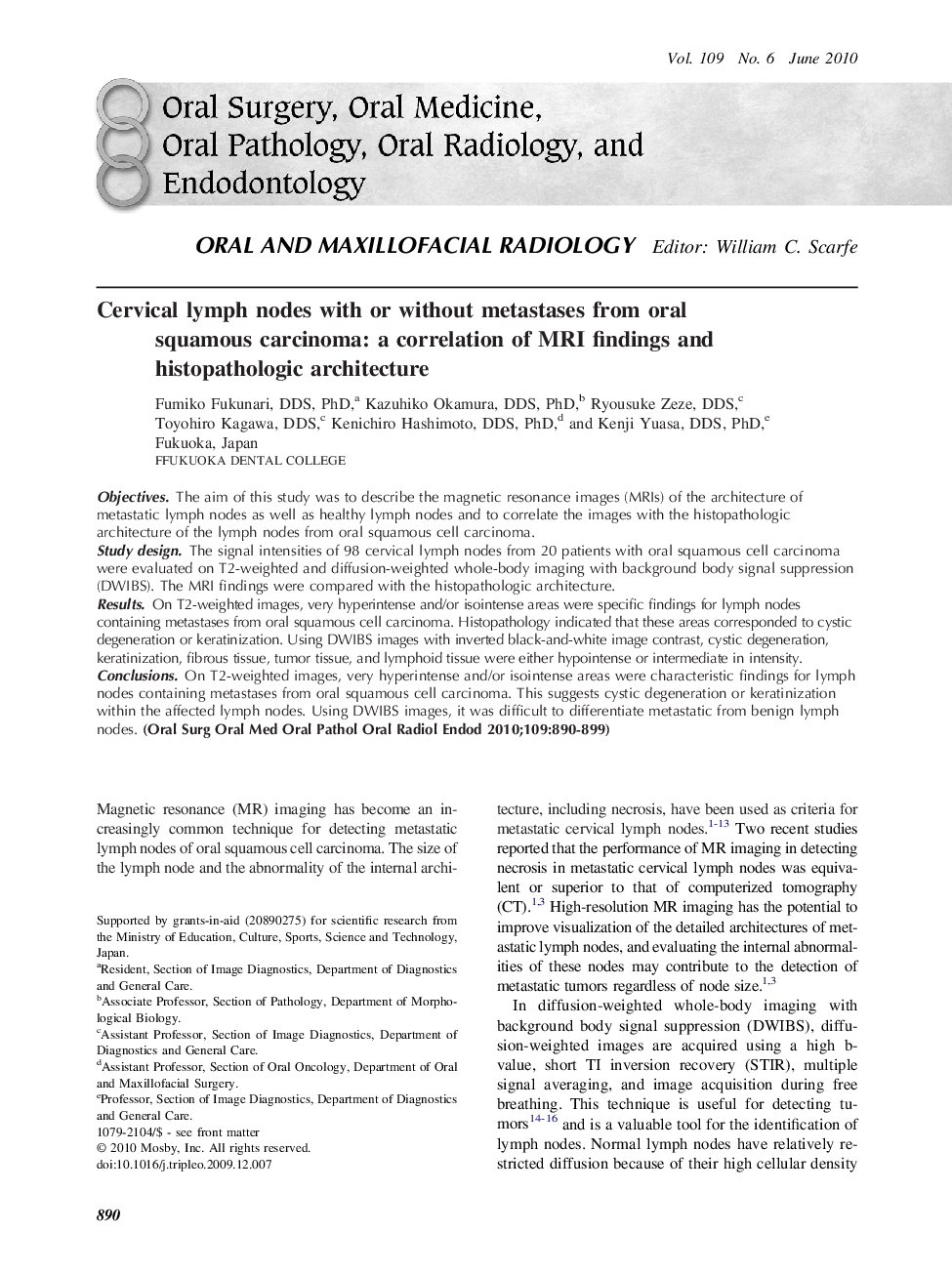| Article ID | Journal | Published Year | Pages | File Type |
|---|---|---|---|---|
| 3167371 | Oral Surgery, Oral Medicine, Oral Pathology, Oral Radiology, and Endodontology | 2010 | 10 Pages |
ObjectivesThe aim of this study was to describe the magnetic resonance images (MRIs) of the architecture of metastatic lymph nodes as well as healthy lymph nodes and to correlate the images with the histopathologic architecture of the lymph nodes from oral squamous cell carcinoma.Study designThe signal intensities of 98 cervical lymph nodes from 20 patients with oral squamous cell carcinoma were evaluated on T2-weighted and diffusion-weighted whole-body imaging with background body signal suppression (DWIBS). The MRI findings were compared with the histopathologic architecture.ResultsOn T2-weighted images, very hyperintense and/or isointense areas were specific findings for lymph nodes containing metastases from oral squamous cell carcinoma. Histopathology indicated that these areas corresponded to cystic degeneration or keratinization. Using DWIBS images with inverted black-and-white image contrast, cystic degeneration, keratinization, fibrous tissue, tumor tissue, and lymphoid tissue were either hypointense or intermediate in intensity.ConclusionsOn T2-weighted images, very hyperintense and/or isointense areas were characteristic findings for lymph nodes containing metastases from oral squamous cell carcinoma. This suggests cystic degeneration or keratinization within the affected lymph nodes. Using DWIBS images, it was difficult to differentiate metastatic from benign lymph nodes.
